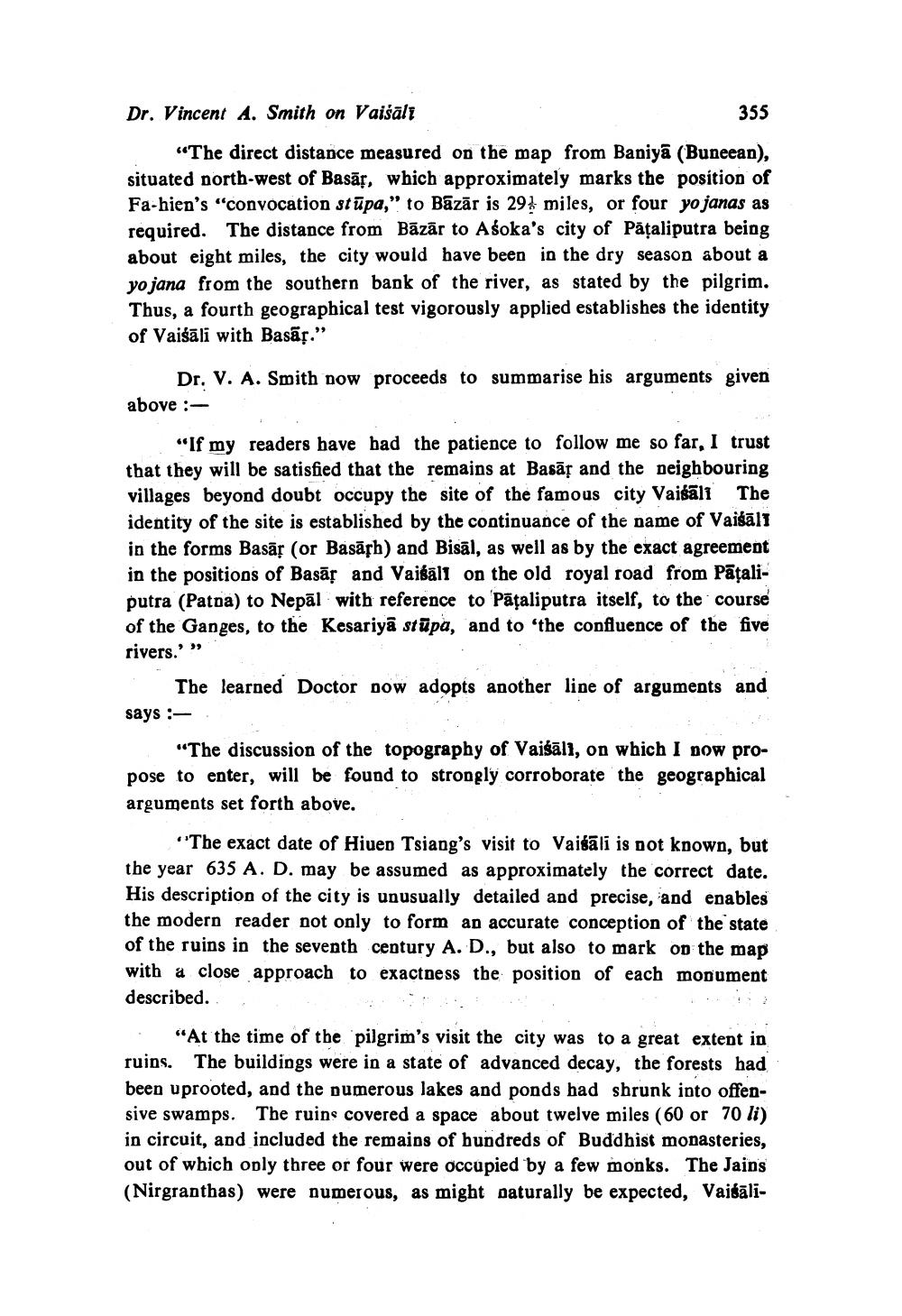________________ Dr. Vincent A. Smith on Vaisali 355 "The direct distance measured on the map from Baniya (Buneean), situated north-west of Basas, which approximately marks the position of Fa-hien's "convocation stupa," to Bazar is 29 miles, or four yo janas as required. The distance from Bazar to Asoka's city of Pasaliputra being about eight miles, the city would have been in the dry season about a yo jana from the southern bank of the river, as stated by the pilgrim. Thus, a fourth geographical test vigorously applied establishes the identity of Vaisali with Basal." Dr. V. A. Smith now proceeds to summarise his arguments given above : "If my readers have had the patience to follow me so far, I trust that they will be satisfied that the remains at Basap and the neighbouring villages beyond doubt occupy the site of the famous city Vaigali The identity of the site is established by the continuance of the name of Vaisali in the forms Basar (or Basaph) and Bisal, as well as by the exact agreement in the positions of Basar and Vaissall on the old royal road from Pasaliputra (Patna) to Nepal with reference to Pataliputra itself, to the course of the Ganges, to the Kesariya stupa, and to the confluence of the five rivers.'>> The learned Doctor pow adopts another line of arguments and says : "The discussion of the topography of Vaisali, on which I now propose to enter, will be found to strongly corroborate the geographical arguments set forth above. "The exact date of Hiuen Tsiang's visit to Vaigali is not known, but the year 635 A. D. may be assumed as approximately the correct date. His description of the city is unusually detailed and precise, and enables the modern reader not only to form an accurate conception of the state of the ruins in the seventh century A. D., but also to mark on the map with a close approach to exactness the position of each monument described.. "At the time of the pilgrim's visit the city was to a great extent in ruins. The buildings were in a state of advanced decay, the forests had been uprooted, and the numerous lakes and ponds had shrunk into offensive swamps. The ruins covered a space about twelve miles (60 or 70 li) in circuit, and included the remains of hundreds of Buddhist monasteries, out of which only three or four were occupied by a few monks. The Jains (Nirgranthas) were numerous, as might naturally be expected, Vaisali




